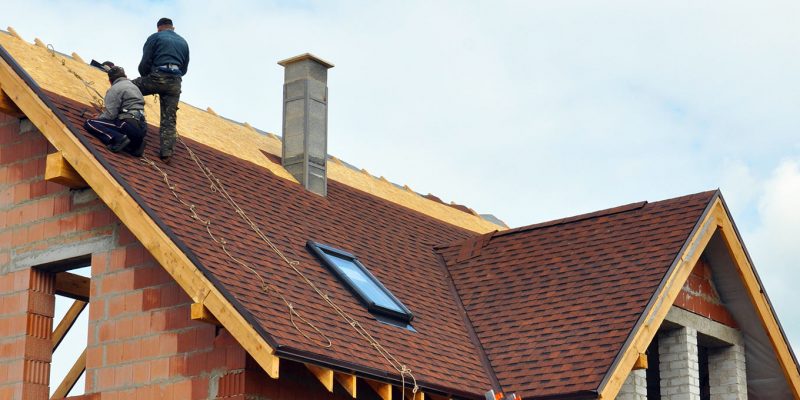
Roof installation is a critical aspect of building construction, significantly impacting the structural integrity, energy efficiency, and overall performance of a property. Proper installation ensures that the roof effectively protects the building from external elements while enhancing indoor comfort and safety for occupants. In this article, we will explore the importance of proper roof installation and its implications for structural stability, energy efficiency, indoor comfort, regulatory compliance, and warranty protection to get site.
- Introduction
A. Importance of Roof Installation
Proper roof installation is essential for safeguarding the structural integrity and longevity of a building, as the roof serves as the first line of defense against weather elements, including rain, wind, snow, and sunlight.
B. Overview of Roofing Systems
Roofing systems consist of various components, including structural support elements, roofing materials, insulation, ventilation systems, and waterproofing layers, all of which work together to create a protective barrier for the building.
C. Significance of Proper Installation
Proper installation ensures that each component of the roofing system functions optimally, minimizing the risk of water infiltration, structural damage, energy loss, and indoor air quality issues.
II. Structural Integrity and Protection
A. Structural Support and Load Distribution
Importance of Proper Framing and Decking
- The structural integrity of the roof depends on the quality of framing and decking materials, as well as their proper installation to support the weight of roofing materials and withstand external forces.
Role of Trusses and Rafters
- Trusses and rafters provide structural support and load distribution, transferring the weight of the roof to the building’s walls and foundation, thus ensuring stability and resilience against external loads.
Ensuring Load Distribution and Stability
- Proper installation of trusses and rafters ensures even load distribution across the roof structure, preventing sagging, deflection, or collapse under heavy snow loads or wind pressure.
B. Weather Resistance and Waterproofing
Effective Water Shedding and Drainage
- Proper roof installation includes the correct slope and design to facilitate water shedding and drainage, preventing water pooling and ponding on the roof surface, which can lead to leaks and water damage.
Role of Underlayment and Flashing
- Underlayment and flashing are essential components of the roofing system that provide an additional layer of waterproofing protection, preventing water infiltration at vulnerable areas such as roof valleys, penetrations, and transitions.
Preventing Water Intrusion and Moisture Damage
- Proper installation of underlayment and flashing, along with meticulous attention to detail during roof installation, minimizes the risk of water intrusion and moisture damage to the roof deck, insulation, and interior spaces.
C. Wind Resistance and Durability
Wind Uplift and Wind Load Considerations
- Properly installed roofing materials and fastening methods are essential for resisting wind uplift and wind loads, especially in areas prone to high winds or severe weather conditions.
Impact of High Winds on Roofing Materials
- Roofing materials must be securely fastened and resistant to wind damage to prevent uplift, displacement, or damage during storms, hurricanes, or tornadoes.
Enhancing Roof Strength and Resilience
- Proper installation techniques, including the use of appropriate fasteners, sealants, and reinforcement methods, enhance the strength and resilience of the roof, reducing the risk of wind-related damage and ensuring long-term durability.
III. Energy Efficiency and Environmental Impact
A. Thermal Performance and Insulation
Role of Insulation in Energy Efficiency
- Proper insulation installation reduces heat transfer through the roof, minimizing energy consumption for heating and cooling and improving overall energy efficiency.
Minimizing Heat Transfer and Air Leakage
- Insulation materials and installation methods that minimize heat transfer and air leakage improve indoor comfort and reduce the workload on HVAC systems, leading to energy savings and lower utility bills.
Improving Comfort and Reducing Energy Costs
- A well-insulated and properly installed roof maintains consistent indoor temperatures, enhances occupant comfort, and reduces reliance on mechanical heating and cooling systems, thus lowering energy costs and environmental impact.
B. Sustainable Materials and Practices
Choosing Environmentally Friendly Roofing Materials
- The selection of sustainable roofing materials, such as recycled content, renewable resources, or energy-efficient options, reduces environmental impact and supports green building practices.
Recycling and Reusing Roofing Components
- Proper disposal and recycling of old roofing materials minimize landfill waste and conserve natural resources, contributing to a more sustainable and eco-friendly roofing industry.
Impact on Carbon Footprint and Sustainability Goals
- Sustainable roofing practices, including proper installation, material selection, and waste management, help reduce carbon emissions and support sustainability goals, both for individual properties and the broader community.
C. Long-Term Cost Savings and Return on Investment
Energy Savings Over the Lifespan of the Roof
- Properly installed and insulated roofs result in long-term energy savings, reducing utility costs and providing a return on investment that offsets the initial installation expenses.
Reduced Maintenance and Replacement Costs
- A well-installed roof requires fewer repairs and maintenance interventions over its lifespan, minimizing long-term maintenance costs and extending the time between roof replacements.
Maximizing ROI with Proper Installation and Maintenance
- Investing in proper roof installation and maintenance maximizes the return on investment by prolonging the lifespan of the roof, preserving property value, and reducing total cost of ownership over time.
IV. Indoor Comfort and Health
A. Proper Ventilation and Air Quality
Importance of Ventilation for Indoor Air Quality
- Proper roof ventilation reduces indoor humidity levels, prevents condensation, and promotes healthy indoor air quality by removing stale air and pollutants.
Preventing Mold and Moisture Buildup
- Adequate ventilation and moisture control prevent mold growth, mildew, and rot in attic spaces and interior walls, protecting the structural integrity of the building and the health of occupants.
Enhancing Comfort and Health for Occupants
- Proper ventilation ensures a comfortable indoor environment year-round, with balanced temperatures, improved air circulation, and reduced allergens and airborne contaminants.
B. Noise Reduction and Sound Insulation
Role of Roofing Materials in Noise Reduction
- Certain roofing materials, such as asphalt shingles, metal panels, or clay tiles, offer sound-dampening properties that reduce exterior noise transmission and improve interior acoustics.
Minimizing External Noise Transmission
- A properly installed and insulated roof reduces noise penetration from external sources, such as traffic, aircraft, or neighboring properties, creating a quieter and more peaceful indoor environment.
Creating a Quieter and More Pleasant Indoor Environment
- Noise reduction and sound insulation contribute to a more comfortable and enjoyable living or working environment, enhancing productivity, concentration, and overall well-being.
C. Fire Resistance and Safety
Fire Ratings for Roofing Materials
- Fire-resistant roofing materials, such as Class A-rated asphalt shingles or metal panels, provide added protection against fire spread and ignition, reducing the risk of property damage and loss.
Preventing Fire Spread and Damage
- Properly installed fire-resistant roofing systems prevent the spread of fire to adjacent structures and interior spaces, limiting property damage and protecting occupants from harm.
Protecting Occupants and Property from Fire Hazards
- Fire-resistant roofing materials and installation techniques enhance building safety and code compliance, reducing the risk of fire-related injuries, fatalities, and insurance claims.
V. Regulatory Compliance and Insurance Coverage
A. Building Code Requirements
Meeting Local and National Building Codes
- Proper roof installation must comply with local and national building codes, which set standards for structural integrity, fire safety, wind resistance, and energy efficiency.
Compliance with Roofing Industry Standards
- Roofing contractors must adhere to industry standards and best practices established by professional organizations and manufacturers to ensure quality workmanship and code compliance.
Ensuring Legal and Regulatory Compliance
- Failure to comply with building codes and industry standards can result in costly fines, penalties, or legal liabilities, underscoring the importance of proper roof installation by licensed and certified professionals.
B. Insurance Coverage and Liability
Impact of Improper Installation on Insurance Claims
- Insurance coverage for roof damage may be denied or limited if improper installation or maintenance contributed to the cause of loss, highlighting the importance of proper installation for insurance claims.
Risk of Coverage Denials Due to Non-Compliance
- Non-compliance with building codes or manufacturer specifications increases the risk of insurance coverage denials for property damage or liability claims related to roof failures or accidents.
Protecting Against Liability with Proper Installation
- Hiring licensed and insured roofing contractors with a track record of proper installation practices protects property owners from liability risks and ensures coverage for damages caused by roofing issues.
C. Warranty Protection and Peace of Mind
Manufacturer Warranty Requirements
- Many roofing materials come with manufacturer warranties that require proper installation by certified contractors to validate coverage for defects or premature failures.
Benefits of Hiring Certified Roofing Contractors
- Hiring certified roofing contractors ensures that the installation meets manufacturer specifications and warranty requirements, providing peace of mind and protection against unforeseen issues.
Ensuring Warranty Coverage with Proper Installation
- Proper installation practices, documented inspections, and adherence to warranty requirements maximize the likelihood of warranty coverage for future repairs or replacements, minimizing out-of-pocket expenses for property owners.
In conclusion, proper roof installation is essential for ensuring the structural integrity, energy efficiency, indoor comfort, regulatory compliance, and warranty protection of a building. From structural support and weather resistance to energy efficiency and regulatory compliance, every aspect of the roof installation process plays a crucial role in maximizing the lifespan and performance of the roofing system. By understanding the importance of proper roof installation and working with experienced professionals, property owners can protect their investment and enjoy peace of mind knowing that their roof is built to last. Learn more about the importance of proper roof installation to ensure the long-term durability and performance of your property.


